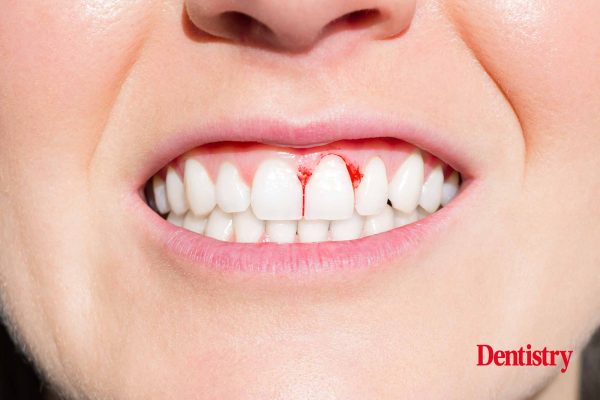Sharif Islam explains to patients that gum inflammation isn’t inevitable, but can be reversible.
They never lie. Even if they wanted to, it is simply impossible. The response is as predictable as saliva is wet.
In fact, our gingivae are one of the body’s most reliable indicators of disease, neglect and over-zealous brushing.
The inflammatory response ensures our gingival tissues blush bright red with embarrassment, revealing the lack of fastidious attention that they most certainly deserved.
The blush lends the toothbrush and paste a vibrant crimson and causes the host much avoidable anxiety.
The dentist will always follow the evidence and they will know that the gums don’t lie. They bear witness to the rosy scarves of inflammation unfashionably wrapped around the collars of the patient’s teeth.
They will know that said patient has only a fleeting acquaintance with their toothbrush rather than the mutually attentive relationship essential for their dental health.
‘All of it is reversible’
His inquiry to the patient as to the type of toothbrush they use is met with an awkward silence, inciting the wonder of whether they use one at all.
The accumulated dam of calculus behind the lower incisors wasn’t built overnight, its reach upon the lingual surfaces expanding its own ecosystem and serrating the tip of the tongue, itself now keratinised white from the abrasion.
If that inflammation persists the gingiva will eventually detach from the tooth, a messy and often painful divorce in which both parties suffer loss and the bearer suffers regret.
Periodontal pockets form, inviting legions of bacteria to infiltrate and nestle deep inside the crevice, promoting a spiral of even more inflammation and the regression of alveolar bone.
We may be looking at a visit to the periodontist who, in the patient’s mind, lurks furtively in the dark like a horror movie slasher, glints of light bouncing off the tip of their scalpel.
And yet each night the patient stares reluctantly at the toothbrush sitting expectantly in the bathroom cabinet, their eyes barely able to look up and confront the blocky plastic rod holding its entangled web of bristles.
This is the culprit, thinks the patient. The orchestrator of all my pain, the reason I bleed into my sink each night, the reason I can’t kiss my own spouse and children. The reason I never want to smile.
But none of this is inevitable. All of it is reversible.
Time for something new
Maybe it’s time to let that old toothbrush go. Maybe it’s time for something new.
Something that one would impatiently look forward to using every morning and night. Something so wonderful that when the cabinet opens the following morning angelic choral chords accompany beams of ethereal light escaping around the silhouette of a gleaming new toothbrush.
How it got there is a mystery. A mystery that, quite frankly, doesn’t need solving. Maybe the spouse bought it for them. Or the kids. It doesn’t matter where it came from. It only matters that it’s there.
And the patient knows this mechanical marvel will be their friend. Its name, taken from the most geologically active place in our solar system, IO, belies the gentle, reassuring hum when switched on.
Its artificial intelligence, created by Oral-B, tells the patient if they are scrubbing too hard or not brushing for long enough. It communicates with their phone to give them a progress report on their cleaning and it smiles at them when they’re finished.
Now they want to brush their teeth every day. Twice a day. At least.
The embarrassment fades. The blush of inflammation disappears and the healthy pink hue returns. With more than seven times the odds of transitioning from gingivitis to healthy gums using an oscillating/rotating toothbrush vesus a manual toothbrush, the bleeding becomes a forgotten footnote lost to the emergence of clean gingival margins and an absence of plaque (Grender et al, 2020).
Look at the patient’s smile
Wait until the dentist sees this. He’ll know the patient has been brushing. He’ll know because gums don’t lie.
The patient’s posture has improved, their body now the transporter of a beaming smile. So, maybe the teeth aren’t perfectly straight and there are a few old fillings in there. But look at how clean they are. And how smooth they feel.
Even the tongue has recovered its normal texture and it loves caressing the teeth. Teeth that now have approximately 20% lower progression for clinical attachment loss and tooth loss (Pitchika et al, 2019).
Each time the brush is returned to its stand the patient can’t help admiring it for a few moments.
If every brush was this dependable, so much dental treatment would be unnecessary. If every brush was this effective, everyone would have excellent dental health.
And if you don’t believe that, just look at this patient’s smile.
Their gums don’t lie.
For references please email seb.evans@fmc.co.uk.


